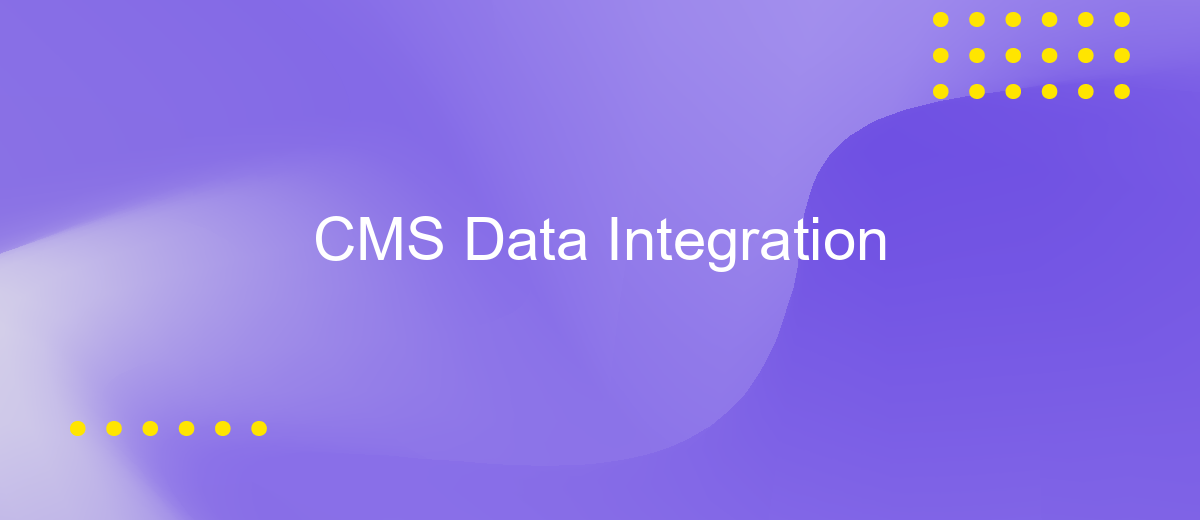CMS Data Integration
In today's digital landscape, seamless data integration within Content Management Systems (CMS) is crucial for enhancing operational efficiency and delivering personalized user experiences. This article explores the key strategies and tools for effective CMS data integration, ensuring that your organization can leverage comprehensive data insights to drive informed decision-making and optimize content delivery across various platforms.
Introduction
In today's digital landscape, efficient data integration is crucial for businesses leveraging Content Management Systems (CMS). Seamless integration ensures that data flows smoothly across various platforms, enhancing operational efficiency and decision-making processes. As organizations increasingly rely on diverse data sources, the ability to integrate this data into a cohesive system becomes paramount.
- Improved data accessibility and consistency
- Enhanced user experience and engagement
- Streamlined workflows and reduced manual effort
- Better insights through comprehensive data analysis
By integrating data within a CMS, businesses can unlock numerous benefits, from enhanced productivity to superior customer experiences. This approach not only simplifies data management but also empowers organizations to make informed decisions based on real-time insights. As we delve deeper into CMS data integration, we will explore the strategies and tools that can help achieve these objectives.
Data Integration Types

Data integration in CMS can be broadly categorized into several types, each serving different purposes and offering unique benefits. One common type is manual data integration, where data is transferred between systems through manual input or file uploads. While this method is straightforward, it can be time-consuming and prone to human error. Another type is application-based integration, which uses software applications to automatically sync data between systems. This method is more efficient and reduces the risk of errors, making it a popular choice for many businesses.
Additionally, cloud-based integration services like ApiX-Drive offer a seamless way to connect various CMS platforms with other applications. These services provide pre-built connectors and automated workflows, significantly simplifying the integration process. By using such services, businesses can ensure real-time data synchronization and improved operational efficiency. ApiX-Drive, for example, allows users to set up integrations without any coding knowledge, making it accessible for non-technical users. This type of integration is particularly beneficial for organizations looking to streamline their data management processes and enhance productivity.
Benefits and Use Cases

Integrating CMS data offers numerous advantages for businesses seeking to streamline their operations and enhance user experiences. By consolidating various data sources into a single CMS, organizations can achieve greater efficiency and accuracy in managing content, leading to more informed decision-making and improved customer engagement.
- Centralized Data Management: Simplifies content updates and maintenance by housing all data in one system.
- Enhanced User Experience: Provides consistent and personalized content across multiple platforms.
- Improved Analytics: Facilitates better tracking and analysis of user interactions and content performance.
- Automation Capabilities: Streamlines workflows by automating repetitive tasks and processes.
- Scalability: Easily adapts to growing data needs and integrates with other tools and platforms.
These benefits make CMS data integration a valuable asset for various use cases, including e-commerce, digital marketing, and content-heavy websites. By leveraging integrated data, businesses can deliver more relevant and timely content, driving higher engagement and conversion rates. This integration not only optimizes operational efficiency but also enhances the overall user experience, making it a critical component of modern digital strategies.
Data Integration Tools and Vendors

In today's digital landscape, integrating data seamlessly across various CMS platforms is crucial for effective content management and business operations. Data integration tools and vendors provide solutions that enable organizations to connect disparate data sources, ensuring data consistency and accessibility.
These tools offer features such as data mapping, transformation, and real-time synchronization, making it easier to manage and utilize data across different systems. They support a wide range of data formats and protocols, ensuring flexibility and scalability for growing businesses.
- Talend: An open-source data integration tool that provides robust ETL capabilities.
- Informatica: Offers comprehensive data integration solutions with advanced data quality features.
- MuleSoft: Known for its API-led connectivity approach, facilitating seamless data integration.
- Microsoft SQL Server Integration Services (SSIS): A powerful data integration tool for SQL Server environments.
- Apache Nifi: An open-source tool designed for data flow automation and management.
Choosing the right data integration tool depends on the specific needs and infrastructure of your organization. It's important to evaluate each option based on factors such as ease of use, scalability, and compatibility with existing systems to ensure a smooth and efficient data integration process.
- Automate the work of an online store or landing
- Empower through integration
- Don't spend money on programmers and integrators
- Save time by automating routine tasks
Best Practices and Future Trends
When integrating CMS data, it's crucial to prioritize data consistency and accuracy. Regularly updating and validating data ensures seamless operations and reduces the risk of errors. Utilize middleware solutions like ApiX-Drive to automate data transfers between disparate systems, enhancing efficiency and reliability. Establishing clear data governance policies and maintaining thorough documentation can further streamline the integration process.
Looking forward, the future of CMS data integration will likely see increased adoption of AI and machine learning to predict data trends and automate routine tasks. Additionally, the growing emphasis on API-first architectures will enable more flexible and scalable integrations. Staying abreast of these technological advancements and continuously refining integration strategies will be key to maintaining a competitive edge in the evolving digital landscape.
FAQ
What is CMS data integration?
Why is CMS data integration important?
How can I automate CMS data integration?
What are common challenges in CMS data integration?
Can I integrate my CMS with multiple applications simultaneously?
Do you want to achieve your goals in business, career and life faster and better? Do it with ApiX-Drive – a tool that will remove a significant part of the routine from workflows and free up additional time to achieve your goals. Test the capabilities of Apix-Drive for free – see for yourself the effectiveness of the tool.


